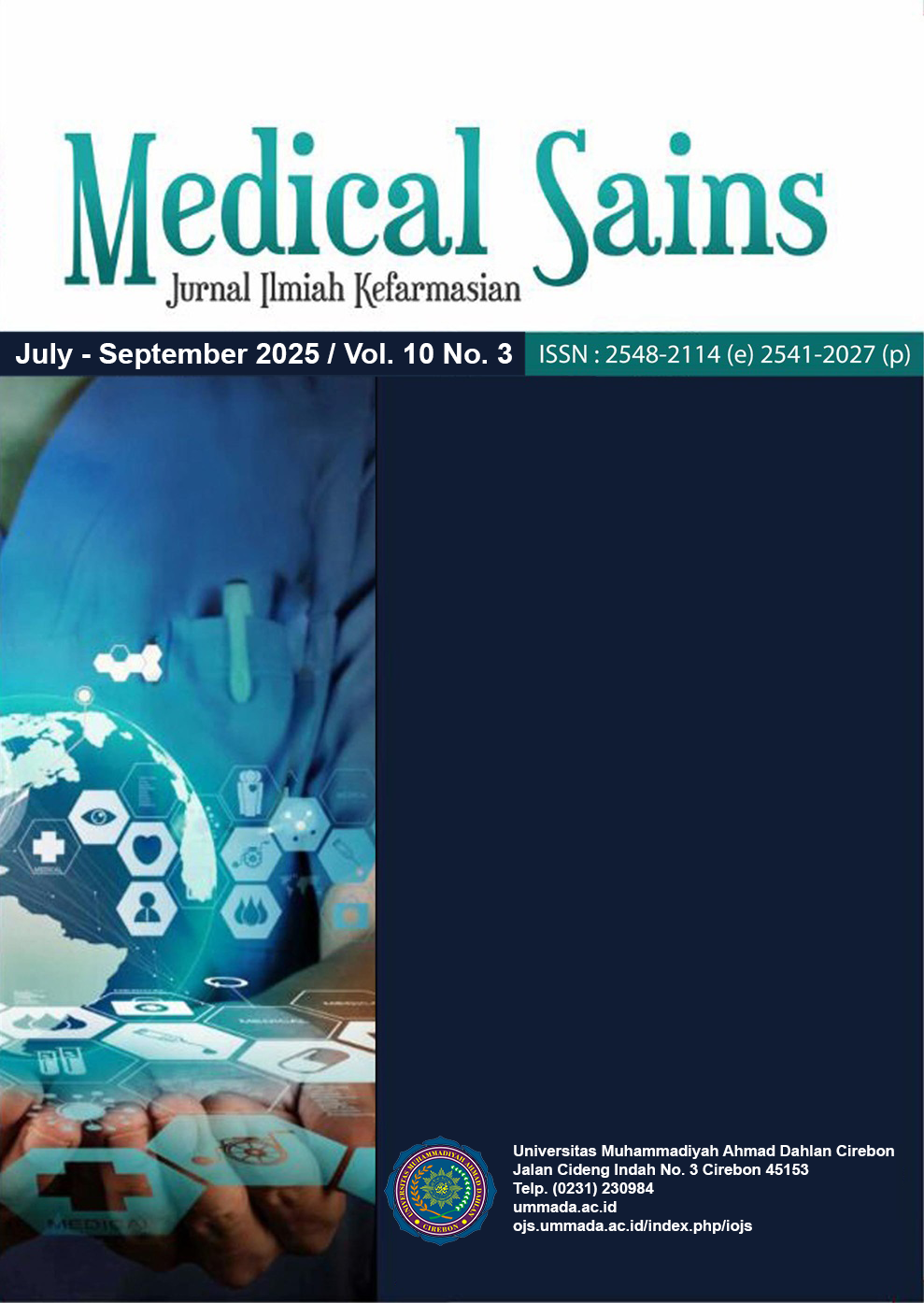COMPUTER-AIDED OPTIMIZATION OF PHYTOCHEMICAL EXTRACTION: BOX-BEHNKEN DESIGN-RESPONSE SURFACE METHODOLOGY (BBD-RSM) APPROACH TO Mimusops Elengi L. LEAVES FLAVONOIDS
Main Article Content
Abstract
Tanjung (Mimusops elengi L.) leaves contain flavonoids that exhibit antimicrobial, antifungal, and antioxidant properties. The extraction conditions must be optimized to obtain an extract with the highest flavonoid content. This study was conducted to determine the optimal extraction conditions using Response Surface Methodology (RSM). The RSM study consisted of stage I, which involved a one-factor-one-time approach to screen factors influencing the extraction and determine their levels, and stage II, which utilized the Box-Behnken Design three-level-three-factor to obtain a regression equation model. The obtained regression equation model was then tested using the Lack of Fit test, individual and simultaneous regression parameter tests, and residual assumption tests. The results of the RSM optimization were verified under optimal conditions and analyzed using a one-sample t-test at a 95% confidence level. The research results indicate that the regression equation model follows a second-order model, namely Y = 1.1623 + 0.0978X1 + 0.052X1X3 ? 0.0873X2X3 ? 0.0111(X1)2 ? 0.0915(X2)2 ? 0.1145(X3)2. The optimum extraction conditions were a particle size of 354 ?m, ethanol concentration of 68%, and solvent-solid ratio of 8.5 mL/g. Verification of the optimum conditions yielded a total flavonoid content of 1.20 ± 0.03% w/w (n=3), which was not significantly different from the predicted result of 1.19% w/w (p > 0.05).
Keywords: Mimusops elengi L., Response Surface Methodology (RSM), Box-Behnken Design, total flavonoid
Article Details

This work is licensed under a Creative Commons Attribution-ShareAlike 4.0 International License.
